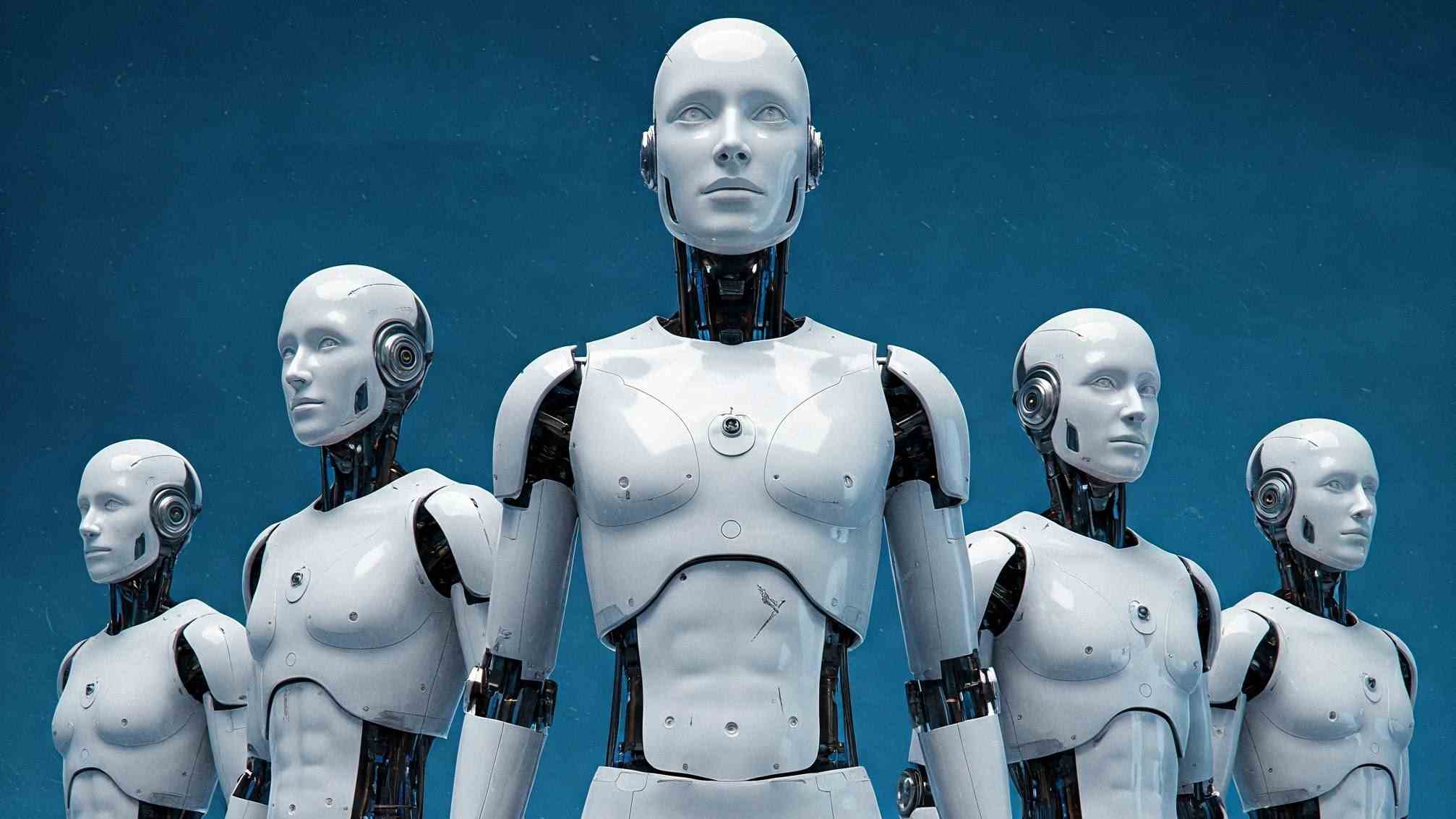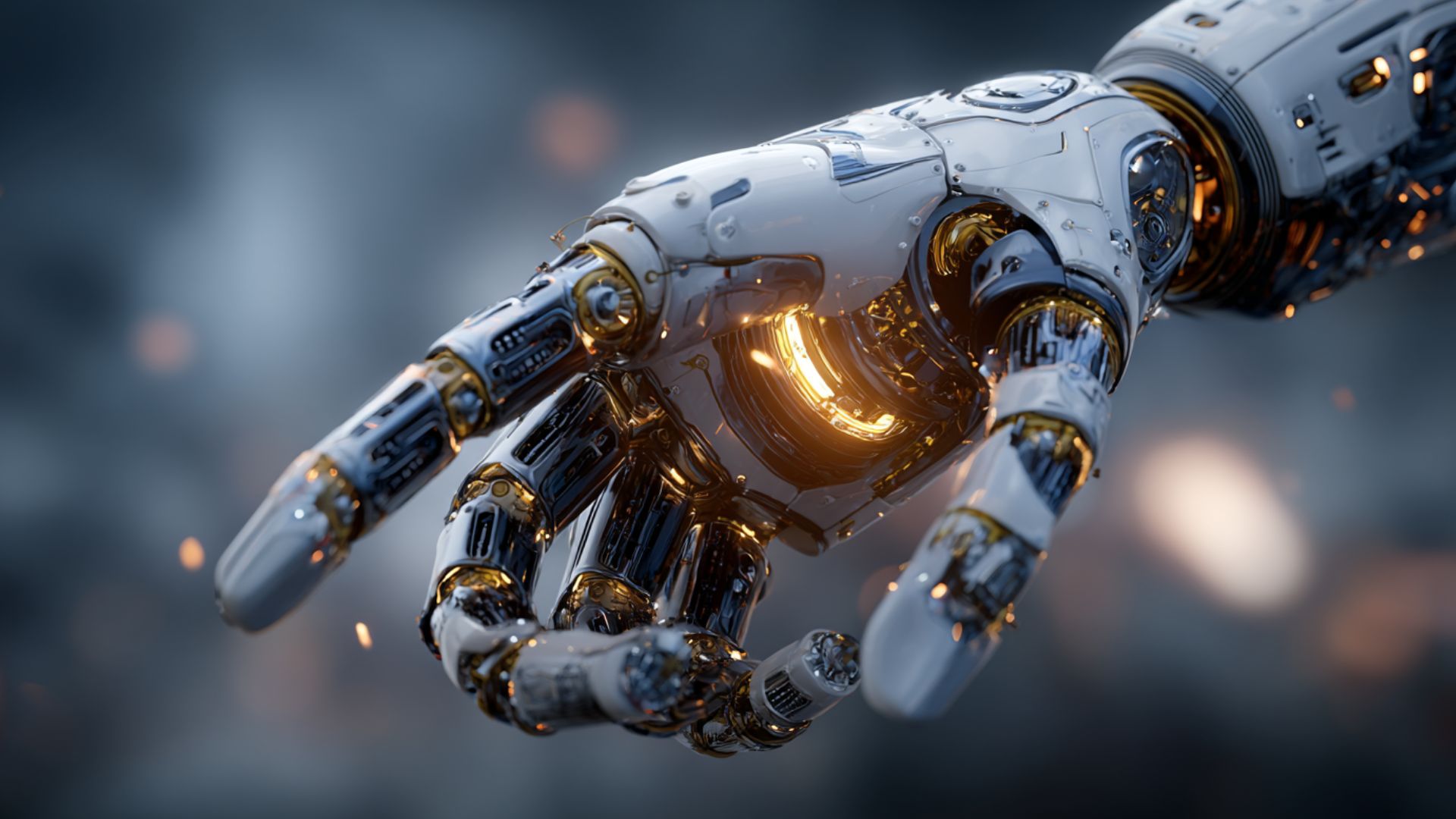What are the 5 Types of Agents in AI?

Artificial intelligence (AI) is reshaping our world, from the apps on our phones to the machines running massive industries. At the heart of this revolution is the question: “What are AI agents?” These intelligent systems or programs are those that:
- Observe their surroundings
- Process information
- Act to achieve specific purposes
So, what is an agent in AI? It’s a digital or physical entity that takes in data - through sensors, inputs, or feeds. And then it uses it to make decisions, often without human intervention. These agents are the unsung heroes of AI. They power everything from voice assistants like Siri to cutting-edge robotics.
Here’s the catch: not all agents work the same way. There are different types of agents, each built for unique tasks and challenges. If you've ever wondered what the 5 types of agents are, you're about to get the full scoop. This article dives into five core types of AI agents. They are rational, reflex, model-based, goal-based, and utility-based agents. These agent types are the backbone of how AI functions across industries and everyday life.
Why does this matter? Understanding these types of agents helps us see how AI tackles problems, adapts to new situations, and powers innovations we rely on. Whether you’re curious about examples of agents in action - like a robot vacuum or a stock-trading bot - or want to explore how they fit into advanced systems, this guide has you covered. We’ll walk through each type, break down their strengths, and show how they’re shaping our future. Let’s kick things off with rational agents - the gold standard of AI decision-making.
Rational Agents: Defining the Ideal AI Model
When someone asks what an AI agent is, rational agents often come up first. These agents are the poster children of smart decision-making. Their mission? To make the best possible choice based on available information, achieving goals with maximum efficiency. There are systems that act randomly or follow rigid scripts. But rational agents think logically, weigh their options, and pick the path that leads to success.
The concept of rationality is key here - it’s about doing what makes sense in the moment. Take a smart thermostat as a basic example. It checks the room’s temperature and compares it to your ideal setting. Then, it decides whether to crank up the heat or cool things down. That’s a rational agent keeping things simple yet effective. Now imagine a self-driving car. It processes data from cameras, radar, and traffic signals to decide whether to accelerate, brake, or turn. It’s all to get you where you’re going safely and on time.
What makes rational agents stand out among different agents is their flexibility. They’re not locked into one way of doing things. They adapt as the environment shifts. This adaptability is usually paired with their focus on optimal outcomes. And it makes them a cornerstone of many AI agents. They’re the ideal model for systems where precision, logic, and responsiveness are non-negotiable. Let’s dive deeper into what drives them and how they shine in the real world.
Characteristics of Rational Agents
Rational agents have a handful of traits that define their brilliance. First, they’re masters of perception. This agent type uses tools like sensors, microphones, or data streams to stay in tune with their surroundings. Second, they act decisively, choosing moves that align with their objectives. Third, they evaluate their actions’ results. They learn from successes and setbacks to refine their approach.
Here’s a detailed look at their key characteristics:
- Perception. They're always 'listening' to the world, whether it's a robot scanning a room or an app tracking user clicks.
- Decision-making. They analyze available options and pick the one that best fits their goal. For example, like a chess AI choosing its next move.
- Adaptability. They adjust to changes, such as a delivery drone rerouting around a storm.
- Self-assessment. They check how well their actions worked, tweaking their strategy if needed. For example, like a thermostat fine-tuning its schedule based on your habits.
- Goal-oriented. Everything they do ties back to achieving a clear purpose, big or small.
This mix of skills makes rational agents incredibly reliable. They don’t just react - they reason through problems. They balance short-term needs with long-term outcomes. Whether they’re managing a smart home or powering industrial automation, it doesn’t matter. Their logical mindset keeps them at the top of the types of agent list.
Applications of Rational Agents in AI
Rational agents are all around us. They prove their value in countless ways. In robotics, they help machines navigate tricky spaces - like a warehouse bot that dodges obstacles while moving packages. Autonomous systems like self-driving cars use rational agents to process a flood of data (road conditions, speed limits, pedestrian movements), making split-second decisions that keep everyone safe. For example, when a deer darts onto the highway, the car's rational agent instantly decides whether to brake or swerve. It prioritizes safety and speed.
In business, rational agents shine in automated decision systems. Picture a retail program that tracks sales, predicts demand, and adjusts inventory orders. This helps avoid overstocking or shortages. That’s a rational agent optimizing profits with minimal fuss. In healthcare, they analyze patient records to suggest treatments based on the latest research. It ensures doctors have solid options to consider.
Even in entertainment, rational agents play a role. Think of a music app recommending songs. It’s a rational agent figuring out what you’ll like based on your listening history. Their efficiency, reliability, and adaptability make them a go-to for many AI agency model designs. Applications range from consumer tech to heavy industry. They’re the backbone of systems that need to think fast and act smart.
Let’s expand this further. In smart cities, rational agents manage power grids. They adjust electricity flow based on usage patterns and weather forecasts. In agriculture, they control irrigation systems. They decide when and where to water crops based on soil sensors and rainfall data. These examples show how rational agents work across scales, from small gadgets to massive infrastructure. They always aim for the best possible result.
Reflex Agents: Simple, Reactive Intelligence

Next up in our exploration of types of agents are reflex agents. They are the simplest members of the AI agents family. These agents don’t waste time thinking or planning. Instead, they react instantly to what’s happening. They’re guided by a set of pre-programmed rules. If a specific condition is met, they trigger a specific response - no hesitation, no complexity.
A classic example is a smoke detector. When it picks up smoke, it blares an alarm - end of story. That’s a reflex agent doing what it’s built for. Among the different agent types, reflex agents are the sprinters — fast, direct, and focused on the here and now. They rely on basic “if-then” logic: “If I sense X, I do Y.” This straightforward approach makes them perfect for tasks where speed trumps strategy.
Reflex agents don’t need fancy hardware or deep processing power, which keeps them lightweight and easy to deploy. They lack the sophistication of other agent types. However, their simplicity is their strength in the right scenarios. Let’s break down their features and see where they fit - and where they don’t.
Features of Reflex Agents
Reflex agents are defined by a few core qualities that keep them lean and mean:
- Immediate response. These AI agents act the second they detect a trigger, like a sprinkler starting when it senses dry soil.
- No memory. Compared to machine learning agents, they don’t store past events or look ahead. They’re all about the present.
- Rule-based. Their actions follow fixed instructions, such as “If the door opens, sound the alarm.”
- Minimal processing. They don’t need heavy computation, making them cheap and efficient.
- Predictability. You always know what they’ll do given a specific input - no surprises here.
This design makes reflex agents quick and reliable for simple jobs. But it also means they can’t learn, adapt, or handle situations outside their rulebook. Unlike more advanced agents that can learn over time, reflex agents remain static. They’re perfect for basic tasks but limited beyond that.
Limitations and Use Cases of Reflex Agents
Reflex agents are champs when you need fast, no-frills action. In video games, they power enemy characters that dodge your attacks based on simple rules. For example, “If the player shoots, duck.” In real life, they’re behind everyday automation, like a motion sensor flipping on a light when you walk into a room. In factories, they might trigger a conveyor belt to stop if a sensor detects a jam.
But their strengths come with trade-offs. In unpredictable or complex environments, reflex agents falter. Imagine a reflex-based robot vacuum cleaner - it might keep crashing into a chair because it can’t “remember” where obstacles are or adjust its path. Dynamic settings, like a busy street or a changing warehouse, expose their limits. They’re not built to think ahead or handle exceptions, unlike more advanced types of AI agents.
That said, their simplicity is a win in the right context. Think of a thermostat that turns on the heat when the temperature drops below a set point. It doesn’t need to predict the weather or learn your preferences; it just acts. In security systems, reflex agents shine by sounding alarms the moment a window breaks. For low-stakes, repetitive tasks, they’re a cost-effective choice. It gets the job done without overcomplicating things.
In biomimetic technology, reflex agents mimic animal instincts. For example, a robotic fish that swims away when it detects a predator-like shadow. In education, they power basic quiz apps that give instant feedback (e.g., “If the answer is wrong, show the correction”). These examples highlight how reflex agents thrive in niche roles, even as more advanced agents take on bigger challenges.
Model-Based Agents: Building on Memory and Representation
Now we step up to model-based agents - a more advanced breed among different types of agents. These agents don’t just react. They think, plan, and adapt using an internal “model” of the world. This model is like a mental blueprint, built from past observations. It helps them understand their environment and make smarter choices.
Picture a robot vacuum cleaner mapping your home. It doesn’t blindly bump into walls - it tracks where furniture, doors, and rugs are. It updates its model as it goes. Next time it cleans, it uses that knowledge to avoid obstacles and cover more ground efficiently. That’s a model-based agent at work. Unlike reflex agents, which live in the moment, model-based agents blend perception with memory. It makes them sharper and more versatile.
Among types of agents, they’re prized for their ability to handle change. They don’t just respond to what’s in front of them. They use their world model to anticipate what’s next. This makes them a big leap forward in AI agents. It’s especially for tasks requiring context and foresight. Let’s explore how their internal models power their decision-making and where they’re making a difference.
The Role of Internal Models in Decision Making
The standout feature of model-based agents is their internal model. It’s a dynamic representation of their environment. This model lets them simulate outcomes before acting, like running a mental rehearsal. For example, a model-based agent in a self-driving car might think, “If I take this turn, will I hit traffic? What if I slow down instead?” By testing these “what ifs,” it picks the best move without real-world risks.
This predictive power sets them apart from reflex agents. In a warehouse, a model-based agent could track inventory levels, model sales trends, and predict when to reorder stock. They avoid shortages before they happen. In a smart home, it might adjust lighting based on your routine. It “knows” you’re usually home by 6 p.m.
This blend of memory, perception, and simulation makes them a key part of autonomous AI agent systems. There, understanding the bigger picture is critical.
Let’s expand this idea. The internal model isn’t static - it evolves as the agent gathers more data. If a delivery drone flies a route and hits unexpected wind, it updates its model to account for weather next time. This adaptability makes model-based agents robust in shifting environments. It bridges the gap between simple reactions and complex planning.
Examples of Model-Based Agents in AI Systems
Model-based agents show up in some pretty impressive places. In video games, they power AI characters that strategize. For example, a virtual opponent that “remembers” your playstyle and adjusts its tactics. In real-world tech, they run traffic systems that model rush hour patterns and tweak signals to reduce gridlock. These examples of agents highlight their knack for combining data with foresight.
In autonomous AI agent tech, like delivery drones, they’re game-changers. A drone maps its path, tracks obstacles (trees, buildings, power lines), and adjusts mid-flight - all thanks to its internal model. In healthcare, model-based agents analyze patient vitals over time. They predict complications and suggest interventions before issues escalate.
Businesses love them too. Retail systems use model-based agents to forecast demand, manage stock, and predict customer behavior. It’s like suggesting products based on past purchases. In manufacturing, they optimize production lines by modeling workflows and spotting bottlenecks. Their ability to learn, predict, and adapt makes them a powerhouse in modern AI. They prove that a little memory goes a long way.
Let’s add more flavor. In education, model-based agents power adaptive learning platforms that track student progress and adjust lessons to fit their pace. In environmental technology, model-based agents monitor ecosystems. For example, a system that models river levels to predict floods and warn communities. These examples show how model-based agents scale across industries, turning raw data into actionable insights.
Goal-Based Agents: Planning for Success

Next, let’s talk about goal-based agents - agents obsessed with hitting specific targets. These types of AI agents don’t just react or model the world - they plan ahead to achieve clear objectives. Among the different agent types, they're the strategists. They use reasoning, search techniques, and problem-solving to find the best route to success.
Think of a GPS system in your car. You punch in your destination, and it doesn’t just tell you where you are. It calculates the fastest path, factoring in traffic, construction, and distance. That’s a goal-based agent plotting your course. It’s not reacting to the moment or building a general model. It’s laser-focused on getting you from point A to point B.
Goal-based agents often use tools like search algorithms or decision trees. For example, a robot tasked with delivering a package might evaluate multiple routes - through the hall, down the stairs, or via an elevator - and pick the quickest one based on time and obstacles. This planning ability makes them shine in best AI agent scenarios, especially where structure and purpose drive the task.
At their core, goal-based agents are driven by intention. In a factory, one might oversee a production line, ensuring every step - from cutting materials to boxing products - meets the goal of shipping goods on schedule. In gaming, they power AI opponents that aim to win, not just survive. Their focus on outcomes makes them essential for complex, goal-driven systems.
In space exploration, goal-based agents guide rovers like NASA's Perseverance. It plots paths across Mars to reach sampling sites while avoiding craters. In logistics, they optimize delivery fleets, ensuring packages hit doorsteps on time. These agents don’t mess around - they’re built to deliver results, step by calculated step.
Utility-Based Agents: Maximizing Value in Decision Making
Finally, we arrive at utility-based agents - the most advanced of the five types of agents. These agents don’t just chase goals. They chase the best possible outcome. They use a “utility” function - a kind of scoring system - to rate different options based on their value, then aim to maximize that score.
Picture an AI trading stocks. It doesn’t just buy low and sell high - it analyzes market trends, risks, and potential profits to pick the move with the biggest payoff. That’s a utility-based agent optimizing its decisions. They're considered top-tier agents because they thrive in uncertainty, balancing trade-offs to find the sweet spot.
Utility-based agents are built for complexity. In healthcare, they might design treatment plans by weighing effectiveness, side effects, costs, and patient preferences - aiming for the highest “utility” for the patient. In gaming, they choose strategies that maximize points or survival odds, not just basic wins. Their focus on value over simple success makes them a standout in AI agents.
Let’s dive deeper. In a smart grid, a utility-based agent could manage energy distribution. They store power when prices are low and sell when demand spikes. It’s all to maximize efficiency and profit. In customer service, it might pick the best response to a complaint, balancing speed, tone, and resolution quality. This ability to juggle multiple factors and prioritize outcomes sets them apart.
In creative fields, utility-based agents even play a role. Imagine a generative AI agent designing a marketing campaign. It evaluates audience appeal, cost, and impact to craft the most effective ad. In robotics, they guide machines through trade-offs - like a bot deciding whether speed or battery life matters more on a long task. Their sophisticated approach makes them the pinnacle of agent design, pushing AI to new heights.
So, there you have it - a deep dive into the five main types of different agents: rational, reflex, model-based, goal-based, and utility-based. Each brings its own flavor, from the quick-and-dirty reflex agents to the value-driven utility-based ones. Whether you’re building an AI agency model or just geeking out over tech, it doesn’t matter. Knowing these different types of agents unlocks the magic of AI.
From autonomous AI agent systems to everyday helpers like smart lights, agents are everywhere. They are quietly making life smoother. As AI evolves, these types of agents will keep growing, blending into our world in ways we can’t yet imagine. Next time you use a smart device, consider the agent powering it and the complex decision-making happening behind the scenes.


